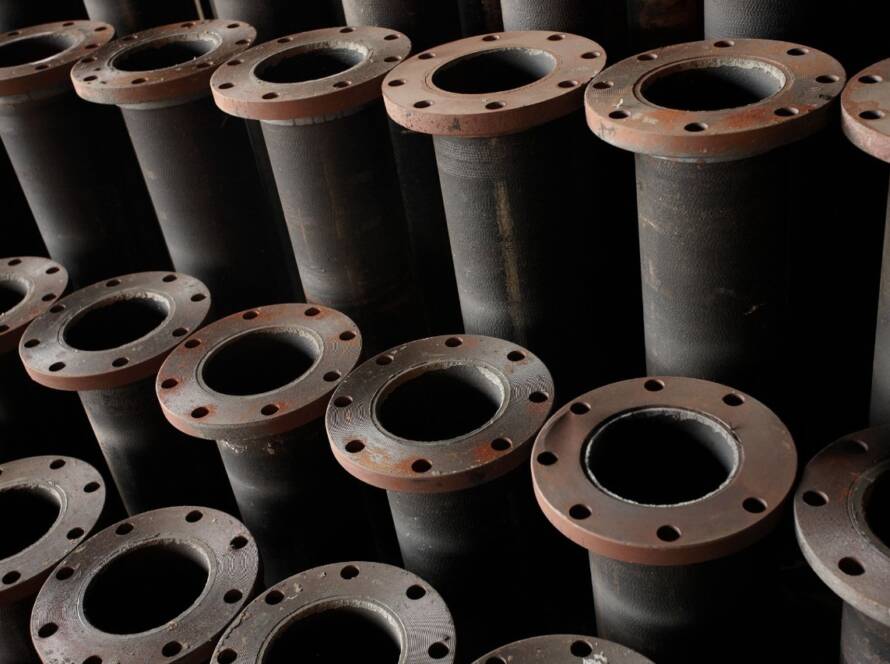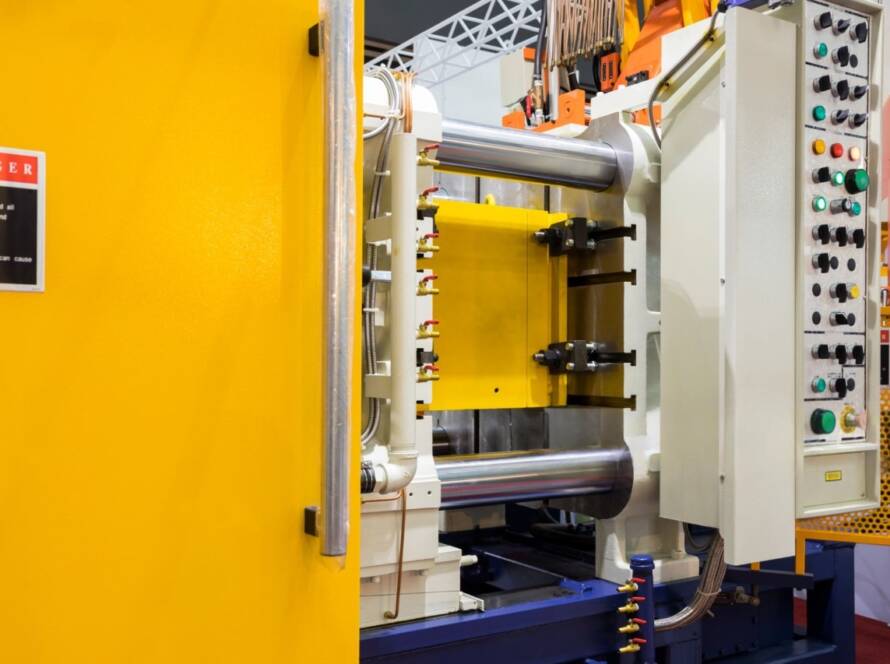Although the manufacturing and foundry industries are changing in India, casting is one of the most basic methods of production. Metal casting is a basis for a variety of industrial uses, including parts for automobiles, machinery, and precision components.
However, achieving casting quality is not always simple. One of the major difficulties faced by foundry engineers is the types of casting defects present, which can greatly detract from the integrity, performance, and appearance of casting products.
In this blog post, we will look at the types of casting defects, discuss root causes, and finally provide practical suggestions to avoid casting defects to assist manufacturers and foundries in India in their ambition to make high-quality, defect-free castings.
What Are Casting Defects?
Casting defects are variations or imperfections that can be present in the metal casting process or product that stem from an inadequate casting process. These defects can stem from forced errors of you, the researcher, as a result of incorrect material selection and/or design, as well as because of mistakes made during equipment and operational planning (for example, mould, pouring, or cooling).
Understanding and recognising the type of casting defects is crucial to improve yield, reduce scrap rate, and provide a product that is consistent each time to our customers.
Common Types of Casting Defects
Let’s consider the major common types of casting defects that are likely to exist in metal casting processes in India and elsewhere in the world:
1. Porosity
Porosity or void spaces in the casting exist due to the trapped gas in the cooling and solidification process.
Causes:
- Poor venting of the mould.
- The mould has wet or moist sand.
- Dissolved gases in the molten metal were not degassed.
Prevention Suggestions: Have a dry sand mould that is well cured, proportion the venting and permeability of the mould, use gas-absorbing additives, or use vacuum casting.
2. Shrinkage Defects
Shrinkage defects can present in a casting as depressions or cavities because of shrinkage due to solidification.
Causes:
- Poor riser design
- A poor feeder system
- A poor cooling rate
Prevention Suggestions: Have reliable risers that feed the molten metal, develop a gating system properly, or cool the molten metal using chills.
3. Misruns
Misruns occur when the molten metal does not fully occupy the whole cavity in the mould.
Causes:
- Insufficient temperature when pouring
- Low filling speed
- Defective design of the gating system
Prevention Suggestions: Increase pouring temperature within limitations. Modify the mould so that fluid can pass over a smooth trajectory; reduce the distance where the metal can travel as it enters the mould cavity, such as by including an extremely short sprue and gating systems.
4. Cold Shuts
Cold shuts are thin lines or cracks that form when two streams of metal do not fuse during the casting process.
Causes:
- Too low a metal temperature
- Too much turbulence during flow
- Defective design of the gating system
Prevention Suggestions: Consider pouring temperature. In designing the mould, try to cause as little turbulence as possible and an unimpeded, smooth flow of metal in the gating system.
5. Inclusions
Inclusions are non-metallic materials, specifically slag, sand, or oxides, that were trapped during the casting process.
Causes:
- Poor filtration
- Contaminated melting furnace
- Careless skimming
Prevention Suggestions: Appropriately use ceramic filters in the gating system. Use melting equipment that is clean, maintained, and used appropriately. Skim the molten metal.
6. Hot Tears
Hot tears are cracks that occur when the casting cannot freely shrink during solidification.
Causes:
- Hot tears can be caused by complicated part geometries,
- Hot tears can be caused by uneven cooling
- Hot tears can be caused by a rigid mould.
Prevention Suggestions: Consider redesigning parts with even wall thickness, using a flexible mould, providing an adequate draft angle and possibly using chills for uniform cooling.
7. Blowholes
Blowholes are spherical gas pockets located just beneath the surface of the casting.
Causes:
- Blowholes can be caused by trapped air and or steam
- Blowholes can be caused by inadequate core and/or mould venting
- Blowholes can be caused by excess moisture in the sand.
Prevention Suggestions: Dry your cores and moulds as needed, improve your venting channels, and use dry sand mixtures.
8. Run-outs
Run-outs occur when molten metal leaves the mould because of cracks or insufficiently sealed sections.
Causes:
- From damage to the mould or misalignment of mould halves.
- From parts of the mould not mating correctly.
- From excessive height of metal head pressure leading to overflow.
- Moisture in the sand is causing head pressure.
Prevention Suggestions: Check the state of the moulds before pouring, mate parts of a mould that need to mate tightly, and, as always, use clamps or bands if required.
9. Cold Shots
Cold shots are defined as relatively small metallic beads or droplets located inside the casting. A shooting question. Cold shots may be caused by splashed metal or by metal that has prematurely solidified.
Causes:
- Pouring with greater turbulence
- Poor gate design
Prevention Suggestions: Don’t splash the metal when pouring; control the pour speed to manage turbulence; improve the gating layout; improve the melt temperature.
Why It’s Important to Prevent Casting Defects in Indian Industries?
India is widely regarded as a casting and metal fabrication hub internationally, as we manufacture parts for all sectors, including automotive, railway, defence, and heavy machinery.
The manufacture of one defective component can result in millions of parts being rejected. The financial cost of rework is significant, and the consequence of lost reputation is immeasurable.
Identifying the types of casting defects and establishing proactive measures to avoid them occurring in the first place has a positive impact on;
- Reduce the total cost of production for the industry.
- Enhance customer satisfaction;
- Augment product reliability;
- Reduce the impact of environmental sustainability with respect to reduced scrap.
Factors That Influence Casting Quality
In addition to understanding the types of casting defects, it will be equally important to understand the other factors which influence casting quality in Indian foundries:
- Mould Design: Poorly designed moulds may contain gases or may restrict the flow of metal.
- Metal Make-Up: Metals that are impure or poorly mixed alloys may create inclusions or porosity.
- Pouring Temperature: Incorrect temperatures may lead to misruns or cold shuts or create defects related to gases.
- Cooling Rate: Poorly designed moulds may create localised cooling, which often leads to shrinkage cavities or hot tears.
- Environmental Conditions: Environmental humidity and moisture may enhance gas-related defects in sand casting.
- Operator Skills: Human-related issues, such as distraction or timing, may lead to defects that should not occur in a well-designed, defect-free casting process.
By managing these variables, Indian foundries will reduce the number of types of casting defects and improve reliability.
Best Practices to Avoid Casting Defects
Here are some industry best practices that can assist in reducing types of casting defects:
- Casting Simulation Software: Use casting simulation software to investigate possible defect zones and change designs, and develop designs before executing production.
- Continuous Education: Provide your personnel with education on the new casting techniques and quality assurance procedures frequently.
- Quality Feed Stock: Use clean, quality feed stock material whenever possible to reduce contamination.
- Process Controls: Keep tight process controls for temperature, humidity and time throughout the casting process.
- Post-casting inspections: Perform thorough inspections post-casting to identify and remove defective castings before these shipments to the customer.
Conclusion
In order to maintain the quality standard for products and reduce financial losses, Indian producers must attack the root causes of defects in every type of casting and then act to improve the processes. There are some defects, whether it is porosities, misruns or hot tears, which can compromise the integrity and commercial acceptability of any product.
RM Technocast understands the difficulties of Indian foundries and understands what the solutions are. Whether you have a really difficult design or you have quality problems with castings, our systems and teams consistently produce high-precision parts.To find out more about our castings and casting capabilities, visit us at rmtechnocast.com and begin the opportunity of a lifetime to make defect-free castings.
FAQs
1. What are casting defects in metal foundries?
Casting defects are imperfections or irregularities that occur in the metal casting process due to issues like poor mold design, improper pouring temperature, or trapped gases. These defects can affect the strength, appearance, and performance of the final product.
2. What are the different types of casting defects?
Some of the different types of casting defects include porosity, shrinkage cavities, misruns, cold shuts, inclusions, hot tears, blowholes, run-outs, and cold shots. Each defect has unique causes and requires specific preventive measures.
3. How can casting defects be prevented?
Defects can be minimized through proper mold design, correct pouring temperature, use of clean raw materials, adequate venting, and controlled cooling rates. Advanced simulation software and process monitoring also help detect and correct issues early.
4. Why is it important to avoid casting defects in manufacturing?
Avoiding casting defects ensures consistent product quality, reduces rework and waste, enhances reliability, and lowers overall production costs. It also helps maintain customer satisfaction and strengthens the manufacturer’s reputation.
5. What role does technology play in reducing casting defects?
Modern foundries use technologies like CAD modeling, casting simulation, and automated process controls to predict defect formation and optimize parameters, ensuring high-quality and defect-free castings.
6. Which industries are most affected by casting defects?
Industries such as automotive, aerospace, railways, defense, and heavy machinery depend heavily on casting quality. Defective cast parts in these sectors can lead to serious performance and safety issues.
7. How does RM Technocast ensure defect-free castings?
At RM Technocast, we use advanced simulation tools, precision molding techniques, and strict quality inspections to minimize casting defects. Our experienced engineers ensure each casting meets global standards for performance and reliability.
Read more: Die Casting vs Sand Casting: Key Differences


